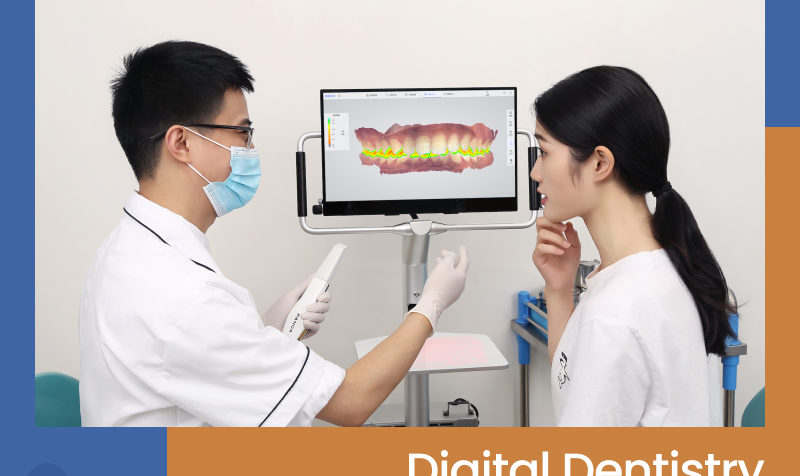The role of digital dentistry in streamlining the workflows of both dental clinics and laboratories is immense. It helps dental clinics by designing and creating best-fit dental devices such as implants, crowns, aligners, braces, and bridges. Since these jobs are fairly time-consuming in a conventional set-up, digitization has helped to streamline matters by improving the workflow.
When it comes to taking digital impressions using a China intraoral scanner and transferring them to the dental laboratories for development, the results delivered are of high-quality and accuracy. Also, the time taken to complete the entire process is considerably less compared to the conventional one. In fact, analog workflows cannot be compared to the workflows enabled by digitization. Let us discuss the top areas digital dentistry can help both dental clinics and laboratories to synergize and work for the benefit of the patients.

Top areas for digitization to make an impact for dental laboratories
Digitization per se has transformed the way we work, communicate, and take decisions. In dentistry, its impact is quite comprehensive whether in helping dentists to make quick and accurate diagnoses or deciding about following a treatment procedure. However, its biggest impact is assisting dental laboratories in a number of areas as mentioned below:
Creating a predictable and efficient workflow:
The conventional way of taking digital impressions and preparing dental implants is not error-proof besides being time consuming. However, with a China intraoral scanner, the scans are more precise and of superior quality compared to analog impressions. With more predictable results, the four ways digital scans have improved the workflow at dental laboratories include:
- Fewer steps to decide on adopting a treatment procedure
- Better and improved workflow
- No waiting period like analog impressions
- Digital scans are used to create dental devices for patients in a fast and efficient manner
Planning for treatment using dental implants:
Digital technology can enable faster and smoother communication and data flow between the dental clinic and laboratory. With a digital impression, the lab technician can design and create the restorative elements with accurate results. In the ultimate analysis, digital dentistry can mitigate errors and risks associated with developing dental restorative elements such as aligners, implants, braces, bridges, and others.
Help in smile makeover treatment:
Cosmetic dentistry deals with improving the appearance of the teeth with a range of treatment options. A China intraoral scanner can give dentists the option of evaluating the patient’s buccal cavity, simulating a smile, and communicating with the lab to create restorations. The laboratory technician can design the restorative element after checking the occlusion, the contact points, and the bite. The technician can compare the design to match the lower and upper arches and then go for printing.
Prevents cross-contamination between clinic and lab:
In conventional dentistry, molds containing analog impressions are sent to the laboratory where they can be subjected to cross-contamination. Since no physical molds are used in digital dentistry, the patients and staff remain safe.
Conclusion
Dental impression systems like a China intraoral scanner have proved to be highly beneficial for patients, dentists, and dental laboratories. These systems have eliminated the risks associated with conventional dental scanning and streamlined the flow of data and communication. With such systems, dental clinics can deliver superior patient experiences and achieve greater footfall.






